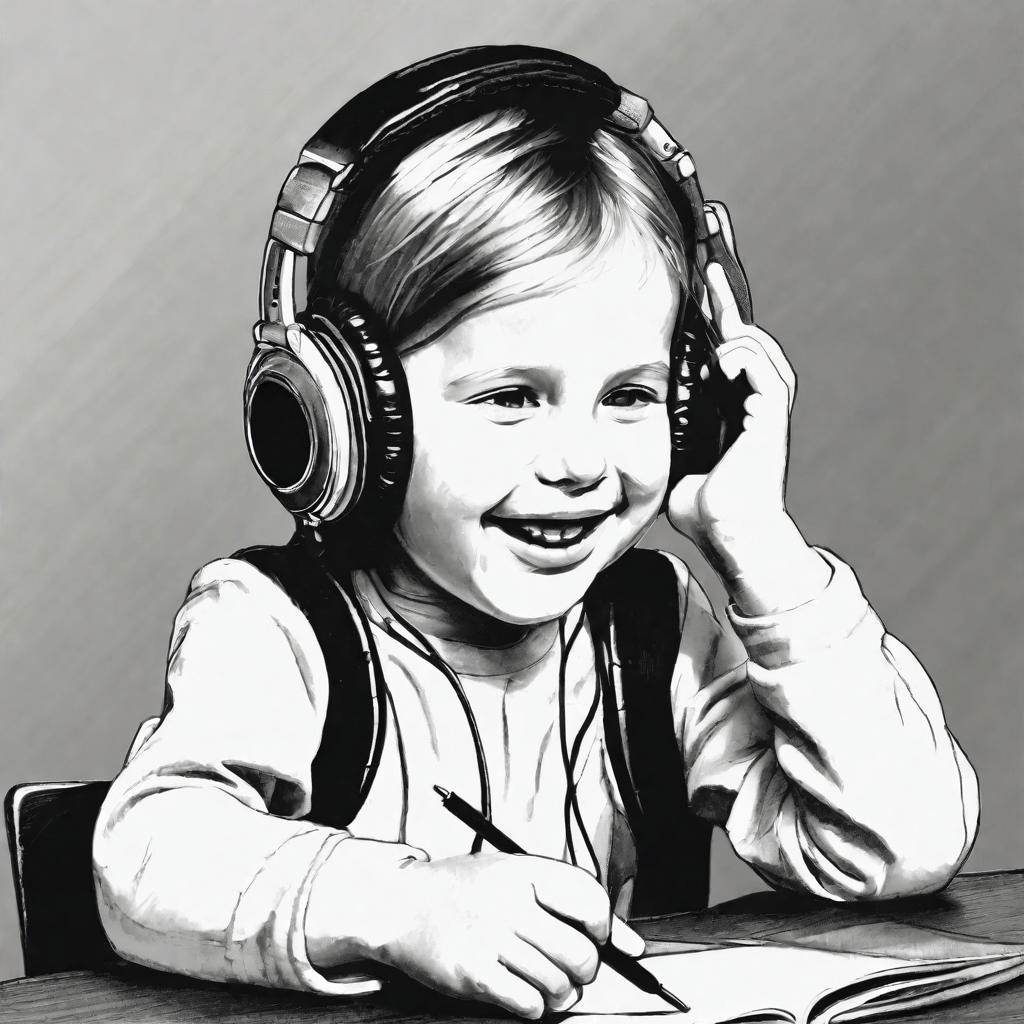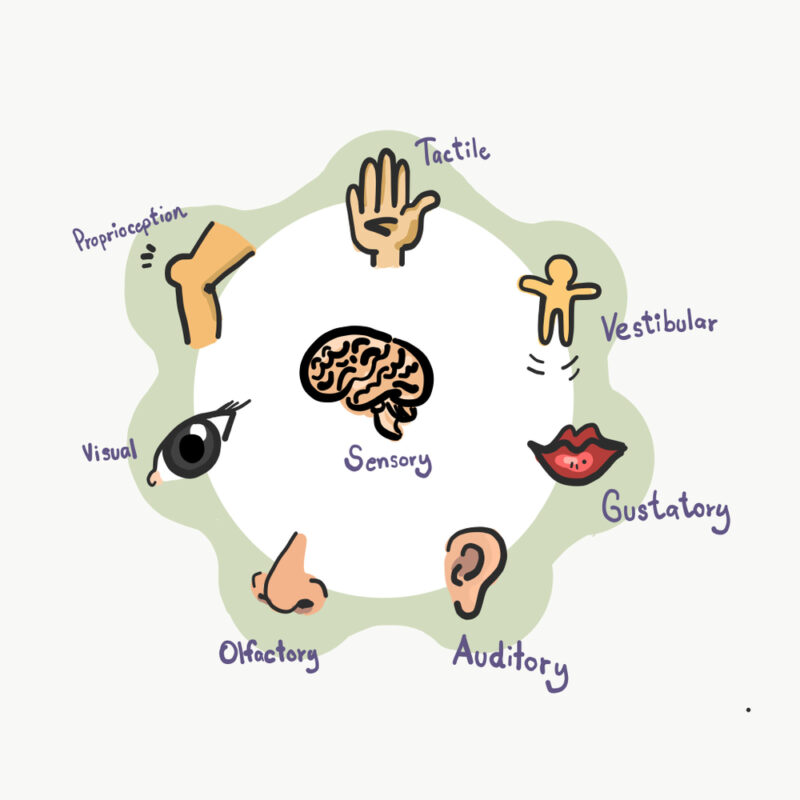
When sensory processing runs impeccably, our senses absorb relevant information from the environment, coordinating harmoniously.
This intricate capability, known as sensory integration, is often disrupted in autistic individuals.
The effects may manifest in various forms, such as hypersensitivity to touch, feeling overwhelmed in noisy surroundings, or an infatuation with a specific sensory input.
Sensory integration, thus, is the neurological process that facilitates the organization of sensory details we experience daily.
From the feel of wind blowing through your hair to the taste of your morning coffee—our senses are ceaselessly at work. For people who navigate this rhythm seamlessly, the process is subconscious.
But for individuals with Sensory Processing Disorder (SPD), the sensation of floating seemingly amorphous sensory inputs can be unnerving.
Autism Spectrum Disorder is a complex neurological and developmental disorder affecting behaviors, communication, and social interactions.
The spectrum in the term signifies the breadth of autism symptoms and their intensities, varying significantly across individuals.
It is also important to mention that many ASD patients exhibit unique strengths and differences that are characteristically autistic.
Not all individuals on the spectrum experience sensory integration issues, but many do. Sensory Integration describes a condition where ASD and SPD intersect.
Resulting symptoms can be overwhelming, intrusive and can disproportionately dominate an individual’s experience.
Understanding this connection is the first step towards finding effective therapeutic and care strategies for those affected. Thus begins our journey into the world of Sensory Integration Therapy and Care.
Sensory Integration Implications
Sensory Integration presents unique challenges to those on the spectrum.
It invariably impacts their daily lives, shapes their development, and comes with profound implications for their families.

The Impact of Sensory Challenges on Autistic Individuals
Autism Sensory Issues often translate into everyday obstacles, primarily due to sensory overload. Sudden loud noises, disjointed lights, or the mere rubbing of clothes may trigger an overwhelming response.
The world, in essence, tends to become a cacophony of magnified and jumbled sensory inputs, leading to anxiety, stress, and sometimes even physical distress. Expounding this further, let’s dive into two case studies.
Consider a simple scenario, such as an autistic child attending a birthday party.
The brightly colored balloons, music on full volume, and bustling crowd can result in a sensory overload, causing unease, discomfort, and possibly a meltdown.
In another case, a teenager with sensory challenges may find the crowded school cafeteria unnerving.
The clattering of cutlery, the loud chatter, and the varied food smells might cause them to retreat, eat alone, and potentially impact their social connections.
Developmental Impacts
The Cognitive Challenges and Learning Difficulties tied with Autism have far-reaching implications.
At school, children may struggle to concentrate given their heightened awareness to sensory distractions.
It’s not unusual for an individual with autistic individuals to demonstrate difficulty tracking a teacher’s movement around the room or tuning out playground noises.
Hence, building an effective learning environment often requires tailored Autism Therapy Techniques.
Further, there can be significant hurdles in social interactions and communications.
The overload of Sensory Input Autism can make the nuances of social dynamics exhausting to navigate.
It can lead to difficulty understanding non-verbal cues, personal space, or engaging in conversations— underscoring the need for individually-tailored interventions.
Parental Perspective
Parents of children with Sensory Integration often report observing distinct behaviors in their young ones.
Compulsive need for certain textures, aversion to specific sounds, or difficulty adjusting to new environments are a few examples.
Navigating this journey is often a learning curve, requiring a supportive framework and the use of Autism Sensory Tools.
Coping methods may involve engaging the child in Sensory Activities Autism to build coping skills, such as tactile games or water play, based on their comfort level.
These activities, when used in conjunction with Sensory Integration Therapy and Occupational Therapy, can bring about notable improvements.
However, no two journeys are alike, and what works varies from one child to another. The critical element is a supportive, understanding environment that empowers the child towards improved sensory integration.
Embarking on the Therapeutic Journey: Sensory Integration Approaches

When individuals with Sensory Integration take on the path of therapeutic interventions, the objective is multi-pronged.
It involves not only mitigating the sensory overloads but also fostering the development of crucial life skills.
Let’s delve into this remarkable journey of self-growth and independence.
Exploring the Concept of Sensory Integration Therapy
Rooted in the principles of neuroscience and developmental psychology, Sensory Integration Therapy is a specialized form of therapy aimed at helping individuals with Sensory Processing Disorder.
The objective is to facilitate better processing and interpretation of sensory inputs, promoting functional responses and behaviors.
Sensory Integration Therapy often involves structured, therapeutic activities designed to challenge the individual’s ability to respond appropriately to sensory input.
Contrary to the more conventional Autism Therapies, which can be more talk-based and didactic, Sensory Integration Therapy is more about bodily experiences and mode of interaction with one’s environment.
Hands-On with Therapy Techniques and Tools
The individualized nature of Sensory Integration Therapy calls for a variety of tools and techniques, often tailored to the unique needs and preferences of the child.
For instance, an occupational therapist might use a sensory integration gym with equipment specially designed to stimulate and challenge the child’s senses in controlled, safe ways.
Therapeutic interventions aim toward helping individuals self-regulate and respond appropriately to sensory stimuli, empowering them to participate in day-to-day activities with less distress.
Techniques could include deep pressure activities, weighted vests for proprioceptive input, or strategic use of sensory integration equipment during play-based activities.
Sensory Integration exercises may also form a vital part of these therapies, focusing on improving overall Motor Skills.
The Multidimensional Effects of Therapy
The positive effects of Sensory Integration Therapy are far-reaching, extending beyond just managing sensory inputs.
Significant improvements often surface in daily life and learning capabilities.
For instance, following these therapies, a child may better cope with classroom noises, allowing for improved focus and grasp of concepts.
Moreover, the ripple effect extends to enhanced social skills and the development of self-regulation abilities.
The child may gradually make strides in interpreting social cues or managing personal space effectively.
Given that social communication often presents a considerable challenge for children on the Autism Spectrum Disorder, such enhancements can significantly improve their quality of life and social integration.
Empowered Care for Sensory Integration
Providing care for individuals with Sensory Integration calls for compassionate understanding and adaptive strategies.
It necessitates viewing the world through their lens, appreciating the sensory experiences they navigate continually. Let’s take a closer look at the role of caregivers in shaping this journey.
Recognizing the Role of Caregivers
Therapeutic Intervention for Autism plays a critical role in managing Sensory Integration. However, caregivers are integral pieces in the larger therapeutic puzzle.
As the constant support system, they play a crucial role in bridging the gap between the therapeutic setting and the child’s daily life.
They are actively involved in reinforcing therapeutic strategies, tracking progress, and providing a nurturing environment to thrive.
One key strategy includes creating a ‘sensory-friendly’ home environment.
Reorganizing spaces to minimize sensory triggers, incorporating sensory activities in the daily routine, or using Autism Sensory Tools can make a significant difference.
Other strategies can involve setting a predictable routine, providing opportunities for motor skills engagement, and being responsive to the child’s unique sensory needs.
Collaborative Care: Combining Professional Therapy and At-Home Support
Emerging trends in Autism Sensory Therapy promote a seamless blend of professional intervention and at-home support.
Maintaining continuity between the two ensures that therapy extends beyond the perimeters of the therapy room.
This model prompts profound, pervasive change, reducing sensory overloads and fostering functional behavior.
In practical terms, this might mean the integration of Occupation Therapy exercises into daily routines, using sensory integration equipment at home, or practicing skills learned during therapy in actual life scenarios.
Encouragingly, several resources and workshops can help caregivers master these home-based strategies, reinforcing the adage, ‘every day is a learning day.’
Building a Brighter Future with Sensory Integration
The road to managing Sensory Integration is peppered with highs and lows, yet marked by the transformative power of understanding and patience.
Living proof is in multiple success stories of individuals who’ve learned to tackle their sensory challenges, enjoying a fulfilling, independent life.
Consider the tale of a young girl who, with early intervention, sensory integration therapies, and consistent home-care efforts, saved her disruptive classroom behavior, ultimately graduating high school with honors.
Or the story of a teenager who, despite his sensory challenges, discovered his passion for music and has been embraced as an emerging talent in his community.
Each story reaffirms the potential lying within every child with Sensory Integration, waiting to be tapped with the right therapy, care, and above all, empathetic understanding.
Navigating the Future
As we look ahead, the horizon is promising for advancements in Sensory Integration Therapy.
With ongoing research and technological breakthroughs, the coming years are likely to usher in more precise, individual-centric therapies that will revolutionize how we manage Autism Sensory Issues.
Innovations such as virtual reality tools for sensory therapy or data-driven personalized therapy regimens are not far off from becoming mainstreamed.
The possibilities are vast as research deepens our understanding of Sensory Processing Disorder and its intersectionality with Autism Spectrum Disorder.
Besides enriching therapeutic strategies, these advancements can also support educators in creating more inclusive learning environments that acknowledge and accommodate these sensory challenges.
Such innovations are prime movers towards building a society that values neurodiversity, fostering acceptance, and enabling individuals to reach their full potential.
In parallel, the role of community support stands pivotal in Sensory Integration Care. Undeniably, caring for a child with sensory integration can pose challenges. Yet, it’s in these shared experiences that the strength of a community flourishes.
Joining support groups, participating in awareness events, or connecting with others on a similar journey can inject hope, provide much-needed advice, and remind caregivers that they are not alone in this journey.
Communities can also play a leading role in advocating for more inclusive societal structures, pushing for regulations that favor sensory-friendly public spaces, or accommodating workplace norms.
In the end, the endeavour for advancing Sensory Integration Care is a collective one, and every stride in this direction brings us closer to a more understanding, supportive, and inclusive world.
